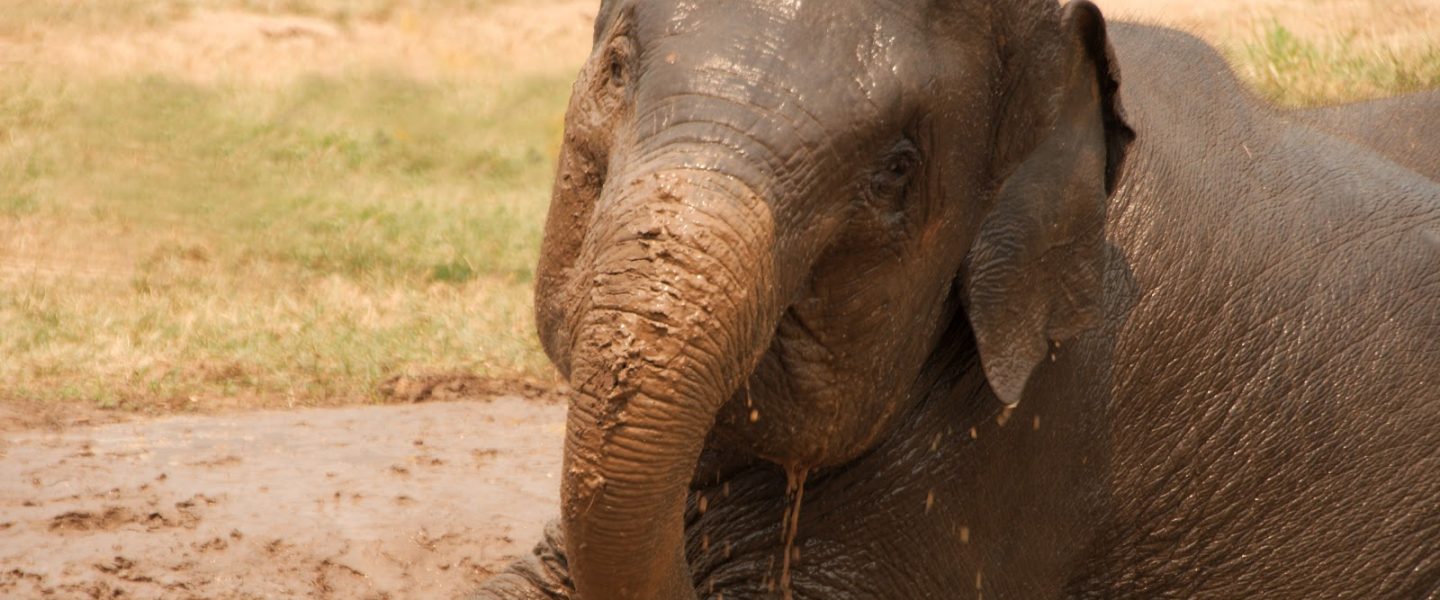Stunning facts about elephants, revealing great intelligence and depth of feeling, and videos showing them reacting to music as humans do. Elephants got rhythm!
At the beginning of the twentieth century, there were about 2 million elephants in Africa, and around 100,000 in Asia. Today, the total is less than 450,000 in Africa and an estimated 40,000 to 50,000 remain in Asia.
What have we lost? What are we still losing? Gentle creatures of phenomenal intelligence, and even empathy, a trait that is supposed to be human.
According to National Geographic, elephants often make heroic efforts to assist each other: Researchers have witnessed an elephant trying to help a dying friend, lifting her with her tusks and trunk, while crying out. Nearby elephants ran to their friend (which is said to be very typical), touching her with their trunks while making soft chirping sounds. One even put her trunk inside the other’s mouth, a behavior, researchers say, elephants find “particularly comforting.”
And they help each other in practical ways, such as plucking out tranquilizing darts, or spraying dust on the wounds of others.
The evidence of empathy is awesome. But for those who are impressed by an animal’s use of tools, here are just a few examples:
They systematically modify branches to swat at flies, breaking them down to ideal lengths for attacking the insects.
Elephants, apparently intentionally, throw or drop heavy things on live wires of electric fences, causing the wires to short.
An elephant in South Africa created his own protected water hole. He was seen digging a hole and drinking water from it. Then he stripped bark from a tree, chewed it into a ball, plugged the hole with it, and covered it with sand. Later he removed the sand, unplugged the hole, and drank more water.
And here is a charming story, demonstrating real wit: “Many young elephants develop the naughty habit of plugging up the wooden bell they wear around their necks with good stodgy mud or clay so that the clappers cannot ring, in order to steal silently into a grove of cultivated bananas at night. There they will have a whale of a time quietly stuffing, eating not only the bunches of bananas but the leaves and indeed the whole tree as well, and they will do this just beside the hut occupied by the owner of the grove, without waking him or any of his family.”
Scientists at the University of Turku, Finland, report that elephants, like people, have individual personalities, and some are mischievous — they like to swing their trunks spraying mucus.
For more mind-boggling examples of how intelligent these animals are, please go here, here, and here.
Below are links to videos showing the wide range of reactions displayed by elephants as they listen to Paul Barton playing the piano. In one video, they quietly listen to classical music. In another, they become raucous and move to the rhythm as Barton plays boogie woogie.
Barton gave up his career as a concert pianist to be with these sentient creatures, and he has established a profound connection with them.
Blind elephant seems moved by Beethoven
Elephants boogie. On and off, briefly starting at 0:09, then again at 0:44, and later. One elephant moves his/her head, another shakes his/her behind to the beat.
https://www.youtube.com/watch?v=hjsu3SGAdLs
Again, moved by the beat, on and off, at 0:14 and 0:27.
https://www.youtube.com/watch?v=9NUHv6udtqU
Blind elephant loves Chopin
Elephant plays the piano, then he plays the man as well.
https://www.youtube.com/watch?v=XC7z8JU5jZU
Pianist Paul Barton explains how he came to play for elephants.
Related front page panorama photo credit: Adapted by WhoWhatWhy from M Silberman / Flickr (CC BY-SA 2.0).



